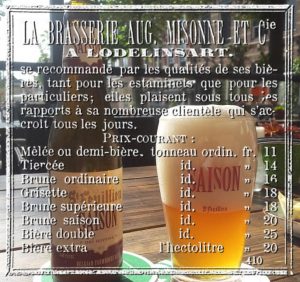 Beers change over time. Even when they keep being made by the same brewer, even if they keep carrying the same name. Even lager is not immune: currently it is moving from sweet to bitter, under the influence of the popularity of IPA, at least in Holland. About fifteenth years ago however, it was moving the other way and our pils was only getting sweeter! The most well-known Dutch supermarket, Albert Heijn, has recently revamped its lager beer: they are now dry-hopping it. However, back in 2002 they announced the opposite: that they were giving their lager ‘a less bitter and more full-mouthed taste.’[1] A nice example from the more distant past is the taste evolution that Luiks beer went through, from a fresh, light-coloured spelt beer to an aged brown barley beer. Here is the whole story, including a recipe! (more…)
Beers change over time. Even when they keep being made by the same brewer, even if they keep carrying the same name. Even lager is not immune: currently it is moving from sweet to bitter, under the influence of the popularity of IPA, at least in Holland. About fifteenth years ago however, it was moving the other way and our pils was only getting sweeter! The most well-known Dutch supermarket, Albert Heijn, has recently revamped its lager beer: they are now dry-hopping it. However, back in 2002 they announced the opposite: that they were giving their lager ‘a less bitter and more full-mouthed taste.’[1] A nice example from the more distant past is the taste evolution that Luiks beer went through, from a fresh, light-coloured spelt beer to an aged brown barley beer. Here is the whole story, including a recipe! (more…)
 After exploring the presence of saison beer in Belgian cities in the previous article, I will now turn to the place this beer type is now most associated with: the countryside. What do we know about the historical rural beers of Wallonia? (more…)
After exploring the presence of saison beer in Belgian cities in the previous article, I will now turn to the place this beer type is now most associated with: the countryside. What do we know about the historical rural beers of Wallonia? (more…)




